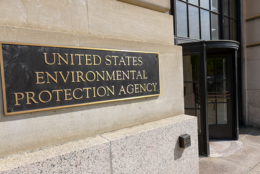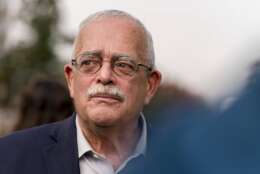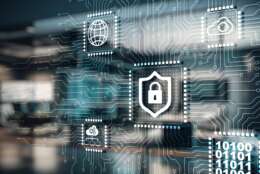Cybersecurity
-
Jason Weiss, the chief operating officer of TestifySec and a former chief software officer for the Defense Department, explains why agencies need to change their approach to securing software and cloud services, FedRamp
February 12, 2024 -
Barry Leffew, the vice president of the government platform accelerator at In-Q-Tel, said areas like cybersecurity, enterprise technology, space, lightweight energy sources and biotechnology are among the company’s top investment focus areas.
February 12, 2024 -
The Biden admin's push to issue cybersecurity regulations for critical infrastructure sectors continues to move forward, despite recent challenges.
February 08, 2024 -
Thanks to the executive order, 2024 will be a year when not only does AI adoption accelerate but so do initiatives to govern it.
February 08, 2024 -
Randy Resnick, the director of the Zero Trust Portfolio Management Office at DoD, said the Pentagon will brief Congress in March on the trends from the 39 zero trust implementation plans it received in October.
February 08, 2024 -
Unless Congress says otherwise, federal contractors will have a raft of new disclosure requirements imposed by the Biden administration. Specifically climate, ESG and cybersecurity.
February 07, 2024 -
No one is immune from cybersecurity attacks, it seems. Just days ago, several senior Microsoft executives fell victim to a "password spray attack" coming from Russia. Did the company downplay how serious this was? And did it fail to use some basic best practices?
February 07, 2024 -
The FITARA scorecard continues to be a point of contention between Oversight and Accountability Subcommittee on cyber and IT leaders.
February 07, 2024 -
Officials at the VA and Treasury say CISA should offer more centralized support to agencies through its cyber services and the Joint Cyber Defense Collaborative.
February 06, 2024 -
The recent National Defense Industrial Strategy highlighted the erosion of U.S. industry's capacity for making things, which includes printed circuit boards (PCB) at the complex end of electronics. Now there are signs the domestic PCB industry is awakening.
February 06, 2024 -
Dem. lawmakers ask GAO to assess damage done to military by Sen. Tommy Tuberville (R-Ala.). The biggest CIA leak ever gets an ex-employee a 40-year sentence.
February 05, 2024 -
By all accounts, artificial intelligence is changing how organizations must approach cybersecurity. Not everyone is quite certain how. Now, a really big working group assembled by the Aspen Institute has come up with specific recommendations on dealing with AI in the cybersecurity context.
February 02, 2024 -
The way you start to build a zero trust architecture is to work with the three horizontal pillars to define and restrict the protected surfaces around the data. If you can break into my IT architecture but cannot get to the data, I win; I’m not happy, but I still won. The answer is to reduce the protected surface for the data. Smaller is easier to manage and protect.
February 02, 2024 -
The DoD CIO wrote a Risk Management Framework overlay for securing the overarching AI environment. It’s “vague about what to look for and how to do the security, but it’s a start,” said DoD CIO David McKeown.
February 01, 2024 -
Agencies have just over 24 hours to shut down any instances of affected Ivanti VPN products, per a new directive from CISA.
February 01, 2024















